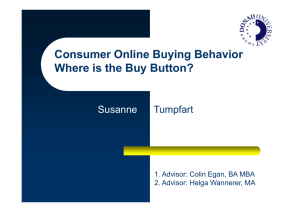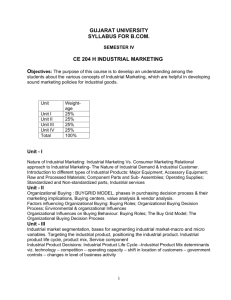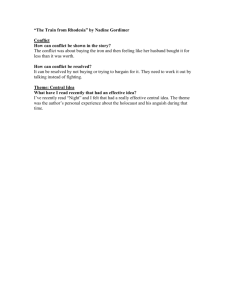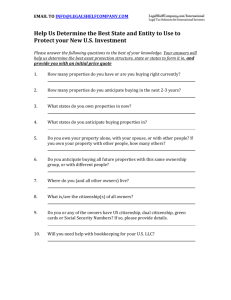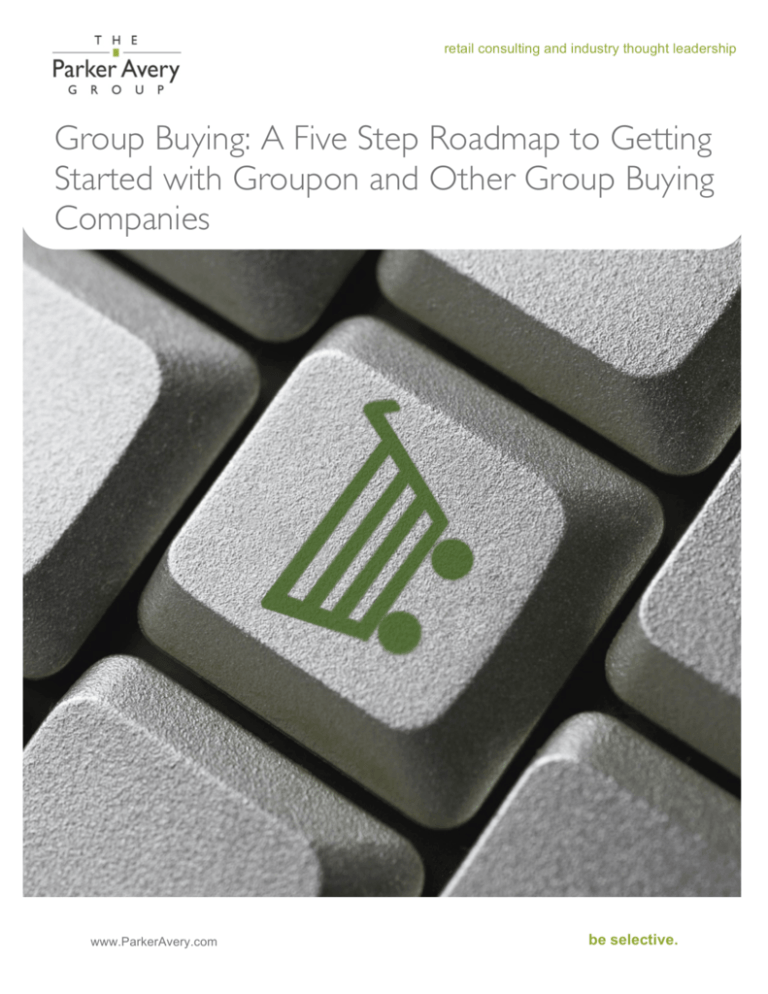
retailOmnichannel
consultingPricing
and industry
thought
Approaches
| ! 1leadership
!
!
!
!
!
!
!
!
!
!
!
!
!
!
!
!
!
!
!
!
!
!
!
!
!
!
!
!
!
!
!
!
!
!
!
!
!
!
!
!
!
!
!
!
!
!
Group Buying: A Five Step Roadmap to Getting
Started with Groupon and Other Group Buying
Companies
www.ParkerAvery.com
be selective.!
!
!
!
Group Buying
| 2!
Group Buying (n.) – the concept of aggregating consumer
demand over a brief time period in exchange for deep
discounts
The tremendous growth of group buying, the concept of aggregating consumer demand
over a brief time period in exchange for deep discounts, is forcing retailers to begin
considering it as a component of their overall marketing strategy. Is now the
appropriate time to jump on the group buying bandwagon? In this Point of View, the
Parker Avery Group presents a five-step roadmap for navigating the group buying
landscape.
Figure 1: Sample Representation of Group Buying Companies
Copyright © The Parker Avery Group. All rights reserved.
be selective.!
!
Group Buying
|
!3
Background & History
Mercata developed the foundation for group buying in 1999 with a website that
correlated the ultimate price for a product (mostly consumer goods) with the number of
consumers who agreed to purchase it during a specified window of time. The more
people who bought, the lower the price. However, by January of 2001, the company had
become yet another casualty of the dot-com bust. Consumers would have to wait
another eight years before Groupon attempted to resurrect the power of group buying in
November 2008.
Offering “1 ridiculously huge coupon a day”, Groupon began to attract consumers by
offering discounts of over 50% once the deal “tipped” (i.e., a minimum number of people
had to buy it). The company took a more localized approach than Mercata and focused
its offerings on service providers (e.g., restaurants) in select markets. Merchants
clamored for the undivided attention of a growing subscriber base and were
occasionally overwhelmed by the response. Copycat services began to enter the
market, attempting to differentiate themselves through a focus on a specific niche (e.g.,
outdoor/adventure activities) or added incentives. Living Social, for example, enables
consumers to receive a deal for free if they can convince three friends to purchase it as
well.
www.ParkerAvery.com
be selective.!
Group Buying
| 4!
Growth
In 2010, the group buying market
exploded. By the end of the year, Living
Social was serving over 100 markets in 5
countries, and Groupon had grown to over
300 markets in 35 countries, with a total
subscriber base of more than 50 million
consumers. After raising more than $40
million of capital throughout the year,
Living Social received a $175 million
investment from
Amazon.com. Meanwhile, Groupon
rejected a $6 billion takeover offer from
Google and then proceeded to raise $950
million to support its growth.
As the group buying companies have
grown, their massive subscriber lists
have begun to pique the interest of
marketers at larger companies. While
continuing to focus on localized deals for
the markets they serve, group buying
companies are beginning to experiment
with national promotions. When it offered
$50 worth of merchandise at the Gap for
$25, Groupon sold 441,000 units,
generating sales of more than $11
million. Living Social offered $20 gift
cards to Amazon.com for $10 and sold
over 1.3 million of them worth more than
$13 million. These numbers are
impressive by themselves, but their true
value is likely even greater. Groupon
reports that its redemption rate is north of
80%, and after the initial incentive to
make a purchase, many of those
consumers will spend more than the value
of the deal.
Copyright © The Parker Avery Group. All rights reserved.
Figure 2: Group Buying Growth
Figure 3: Mobile Coupon Adoption
be selective.!
!
Group Buying
|
!5
Recommendation
The growing subscriber bases of companies such as Groupon and Living Social have
proven that group buying is capturing consumers’ attention. Not only are they paying
attention, they’re buying. Retailers should therefore follow these steps to evaluate the
potential role of group buying in their overall marketing strategy:
1. Evaluate market alignment
Despite their rapid growth, the group
buying companies are still highly
localized. As they continue to offer
more national deals, their subscriber
lists will expand, but for now, their
potential is limited to the markets they
serve. Brick and mortar retailers must
evaluate which group buying companies
are most aligned with their store
footprint. Catalog and e-commerce
retailers must evaluate if the markets
served by the group buying companies
align with the geographic distribution of
their customer list.
2. Create a compelling offer
Group buying customers are attracted
by the deep discounts. Many of the
dollar amounts are nominal and cover
only a small portion of the eventual total
bill. Therefore, keep the value small,
but don’t be afraid to offer a large
percentage off. Focus on attracting
customers to purchase the deal with a
can’t miss offer and get them into your
store or onto your website. Don’t worry;
they will spend more once they are
there.
3. Prepare customer service
Group buying is a new concept, and
many of your employees who interact
with customers may be unfamiliar with
the logistics of how it works. The last
thing you want is to attract new
customers and then deliver a poor
www.ParkerAvery.com
experience. Make sure that store
personnel know how to process both
printed and mobile coupons. Create
FAQs for customer service
agents. Anticipate questions such as
“can I use this online or just in the
store?”
4. Conduct a pilot
As with any new marketing strategy,
retailers should conduct a group buying
pilot to evaluate its potential
effectiveness. Identify a few select
markets to include. Gather data on the
costs, both in terms of the fees you will
pay to the group buying company as
well as the discounts you will offer your
customers. Determine the minimum
return you will require for the pilot to be
considered successful. Finally,
compare the results versus your other
marketing alternatives.
5. Go national (or international)
If you achieve your target ROI with the
pilot, consider a national campaign. The
group buying companies are still
building their capabilities in this space,
so there is some risk, but the potential
for an early adopter advantage
remains. Talk to the companies about
new deal tactics they are interested in
testing. Be the first to create a unique
national campaign, and then set up
alerts to track all of the free press
coverage that ensues.
be selective.!
Group Buying
| 6!
Final Word
The group buying market is rapidly evolving, and retailers cannot ignore its potential.
Your customers are swarming to this new medium. The only question that should
remain is how much of your marketing budget to allocate to it.
Copyright © The Parker Avery Group. All rights reserved.
be selective.!
Group Buying
!
|
!7
The Parker Avery Group
The Parker Avery Group is a boutique strategy and management consulting firm that is a trusted advisor to
leading retail brands. We combine practical industry experience with proven consulting methodology to deliver
measurable results. We specialize in merchandising, supply chain and the omnichannel business model,
integrating customer insights and the digital retail experience with strategy and operational improvements.
Parker Avery helps clients develop enhanced business strategies, design improved processes and execute
global business models.
Learn more about us at:
www.ParkerAvery.com
!
for more details
contact:
Robert Kaufman
CEO | robert.kaufman@parkeravery.com
770.882.2205
!
!
www.ParkerAvery.com
be selective.!



